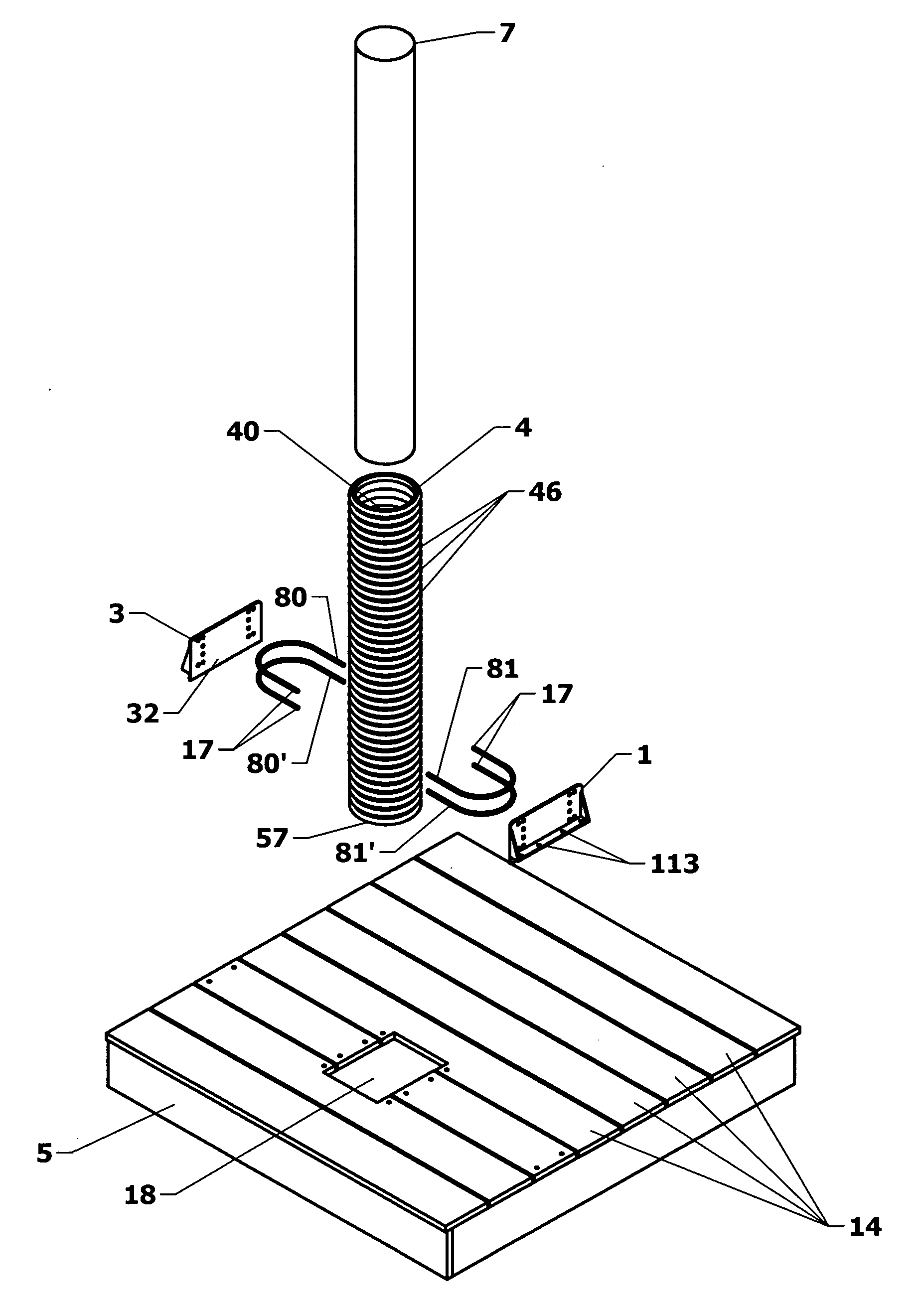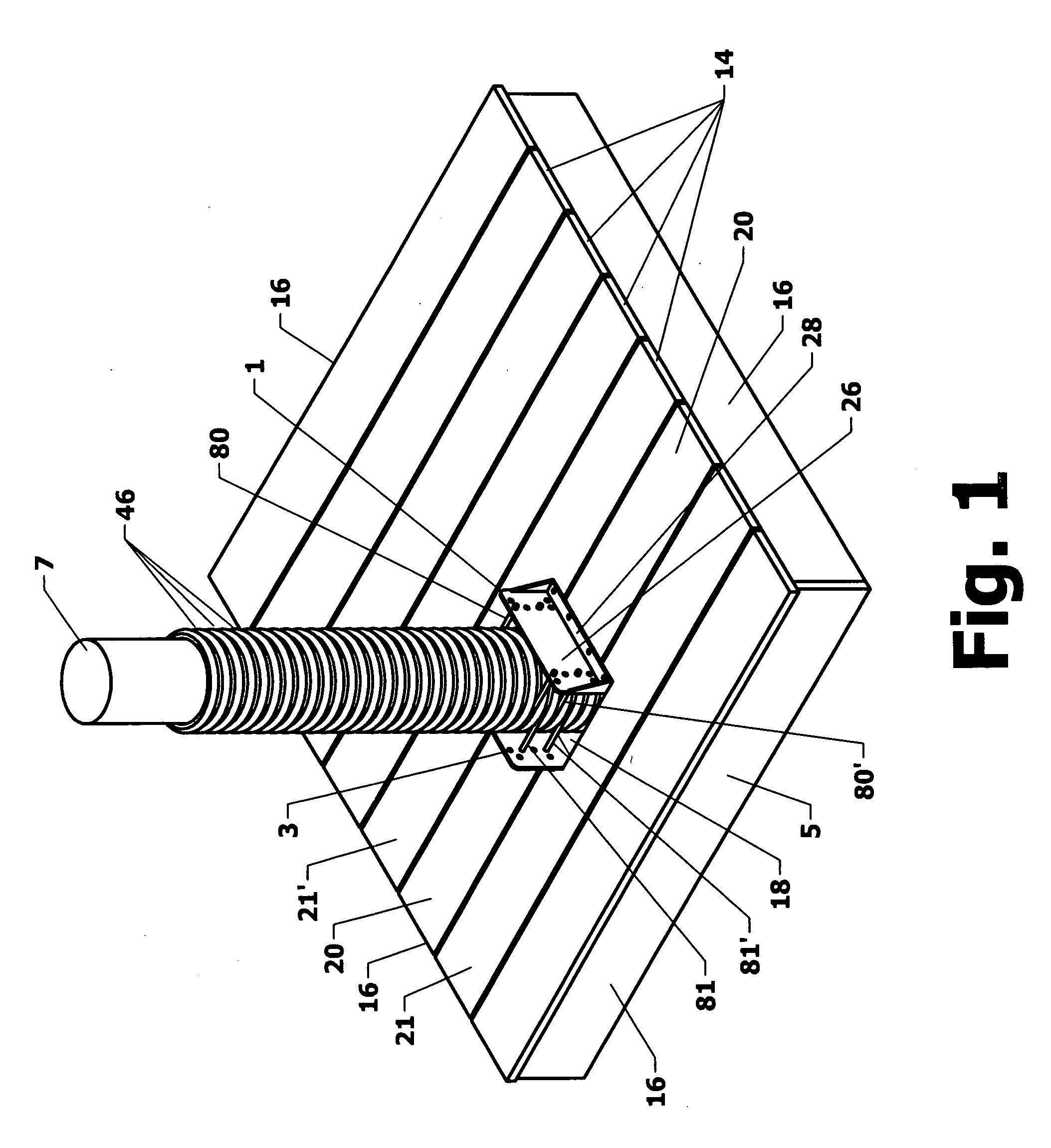Apparatus for affixing a dock to an inboard mooring pole
a technology for attaching a dock and an inboard mooring pole, which is applied in the field of enhanced utilization of mooring poles, can solve the problems of affecting the service life of the dock, the mooring of floating docks (and the attachments thereto such as “fingers”) to the pilings, and the wear and damage of both docks and piles, so as to achieve sufficient buoyancy, enhance the buoyancy of the floating dock, and the effect of great buoyancy
- Summary
- Abstract
- Description
- Claims
- Application Information
AI Technical Summary
Benefits of technology
Problems solved by technology
Method used
Image
Examples
Embodiment Construction
[0061]FIG. 1 illustrates a preferred embodiment of the present invention wherein two brackets comprised of “L” shaped base plates 1 and 3 and “U” shaped arms depending therefrom are utilized to moore floating dock 5 to pile 7. More specifically, cylindrical sleeve 4 is coaxially mounted upon pile 7. The central bore of the cylindrical sleeve is selected to demonstrate a dimension, as discussed above, so as to enable the sleeve to slip over and, thereafter, move up and down along a length of the pile without binding so as to accommodate motion of the dock caused by changes in tide, currents, wave activities and other disturbances. As discussed above, each of the brackets includes one or more “U” shaped arms (80, 80′, 81, &81′) which, as described in more detail, above and below, engage selected circumferential grooves 46 of the outside surface of the cylindrical sleeve, so as to anchor the sleeve, and the pile therewithin, to the floating dock each bracket is affixed to.
[0062]Dock 5 ...
PUM
 Login to View More
Login to View More Abstract
Description
Claims
Application Information
 Login to View More
Login to View More - R&D
- Intellectual Property
- Life Sciences
- Materials
- Tech Scout
- Unparalleled Data Quality
- Higher Quality Content
- 60% Fewer Hallucinations
Browse by: Latest US Patents, China's latest patents, Technical Efficacy Thesaurus, Application Domain, Technology Topic, Popular Technical Reports.
© 2025 PatSnap. All rights reserved.Legal|Privacy policy|Modern Slavery Act Transparency Statement|Sitemap|About US| Contact US: help@patsnap.com



